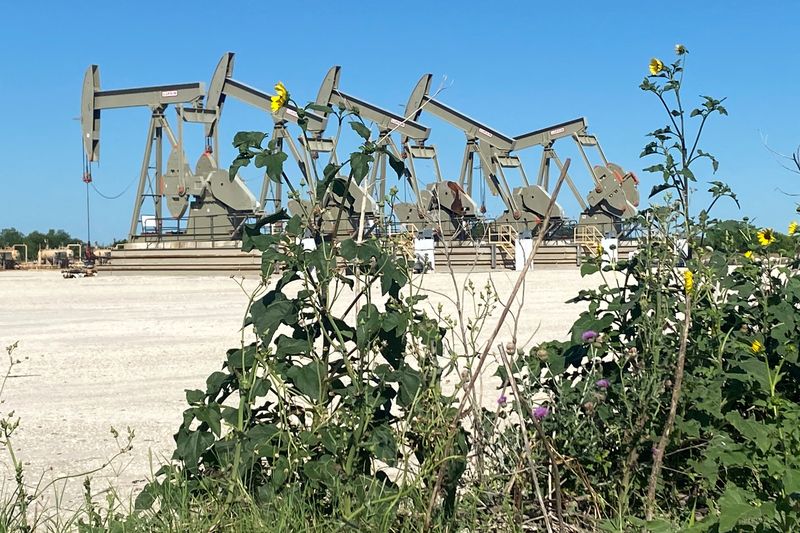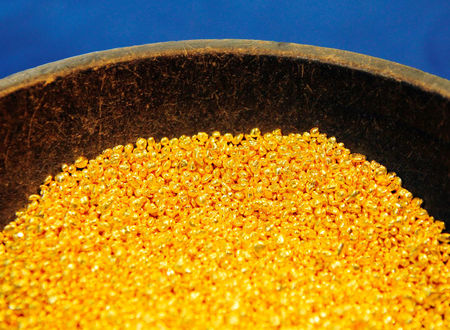Commodities
Huawei-IUCN Tech4Nature Initiative Announced New Phase of Coral Reef Protection Project

Digital Technology Helps Mauritius to Become a Global Pioneer in the Field of Coral Reef Conservation, Research, and EducationFLACQ, Mauritius, June 24, 2023 /CNW/ — Huawei Mauritius, International Union for Conservation of Nature (IUCN), and EcoMode Society today announced a new phase of the Tech4Nature Mauritius project to study species’ reproductive success in a restored area of reef in Mauritius.The new phase directly follows a key project milestone achieved in June in which the partners, supported by the local community, successfully transplanted 25,000 coral fragments cultivated in coral nurseries to a degraded area of the reef ecosystem in Pointe-aux-Feuilles, a 20-km2 site off the east coast of Mauritius. This project is one of the first its type in the Western Indian Ocean. “I commend the achievement of the Tech4Nature initiative. Our objective is that by 2030, we can work together for a healthy ocean that supports nature and people,” said the Honorable Sudheer Maudhoo, Minister of Blue Economy, Marine Resources, Fisheries and Shipping for Mauritius. “With the support of the Tech4Nature initiative, Huawei, and its partners, we look forward to continued action to restore ocean and coastal biodiversity for future generations.”To monitor the mobility of species at the coral reef restoration site and determine the factors that disturb reproductive success, a solution comprising cameras and GPS receivers, 4G, and cloud has been deployed. The second phase of the project will use AI-based data analysis to guide the conservation decisions, support the research of marine biologists, and educate the public on the importance of reef conservation and restoration. “The project will help us to have more information to manage and regulate public use,” said Nadeem Nazurally, President of the EcoMode Society. “It will also bring biodiversity conservation closer to the general public, as videos and other dissemination materials are planned through the mobile app. In collaboration with IUCN and Huawei, the project allows us to make a qualitative leap by incorporating new technologies to the monitoring and conservation of species.”The 243-km2 lagoon created by the 150-km reef system of fringing coral is home to a rich array of aquatic life, including 61 species of macroalgae, 110 species of corals, 132 species of fish, and many endemic species. However, the reef system faces many threats, including overfishing, pollution, and changing seawater composition due to the removal of mangroves and seagrass. Climate change has caused a rise in sea levels, more extreme storms, and increased sea temperatures. Restoration efforts for coral reefs can boost resilience against climate change by protecting coastal regions against erosion and mitigate rising sea levels.As a Small Island Developing State (SIDS), Mauritius relies heavily on its coral reef resources, especially its fisheries and tourism industries – tourism accounts for about 8% of the island nation’s GDP and 10% of its employment. Coral aquaculture to repair degraded reef has gained traction in Mauritius, with microfragmentation serving as a relatively new technique where small coral fragments are mounted in off-site nurseries using concrete blocks, galvanized structures, and natural basaltic rocks to support coral growth.Early monitoring at the restoration site has shown an increase in local biodiversity, and an additional 1,890 coral fragments are currently being propagated in the coral nursery to expand the restoration area. With the site’s designation as a Voluntary Marine Conservation Area (VMCA), the momentum for revitalizing biodiversity in the reef ecosystem using the power of technology and partnerships is accelerating.”Collaboration between public institutions and the private sector is increasingly necessary to determine success in the face of complex environmental challenges,” said James Hardcastle, Head of Protected and Conserved Areas Team for IUCN. “We have the opportunity to take advantage of technological innovations and incorporate them into conservation measures for our ecosystems. This project exemplifies how cooperation and mainstreaming are the way forward to halt biodiversity loss.””This project is the first of its kind that we are investing in Mauritius, after dozens of successful experiences of developing solutions to protect different species and natural spaces in countries around the world using advanced technologies such as cloud, AI, and connectivity,” said Zheng Kui, CEO of Huawei Mauritius. “The role of the technology industry in meeting this challenge is key, but only through collaboration with strategic and committed partners can the objectives be achieved in a real way.”It is hoped that this project can be replicated in other areas of Mauritius and balance the needs of tourism and conservation. And with up to 50% of the world’s coral reef already destroyed or degraded, the project’s success to date demonstrates the value of further large-scale global reef restoration supported by digital technology.About Huawei TECH4ALLTECH4ALL is Huawei’s long-term digital inclusion initiative that aims to leave no one behind in the digital world. It focuses on four domains: enabling equity and quality of education, conserving nature with technology, enabling inclusive healthcare, and development.For more information, please visit the website at https://www.huawei.com/en/tech4allFollow us on Twitter athttps://twitter.com/HUAWEI_TECH4ALL View original content to download multimedia:https://www.prnewswire.com/news-releases/huawei-iucn-tech4nature-initiative-announced-new-phase-of-coral-reef-protection-project-301862452.htmlSOURCE Huawei View original content to download multimedia: http://www.newswire.ca/en/releases/archive/June2023/24/c3558.html
Commodities
Oil settles lower on signs of easing supply tightness

By Shariq Khan
NEW YORK (Reuters) -Oil prices closed slightly lower on Tuesday on signs of easing supply concerns, while market participants shifted their focus to U.S. stockpiles data due later today and Wednesday.
futures settled 17 cents lower at $83.16 a barrel, and U.S. West Texas Intermediate crude futures closed 10 cents lower at $78.38.
Prices fell further in thin post-settlement trading after market sources said that data from the American Petroleum Institute showed a jump in and fuel stocks last week. Rising inventories, typically a sign of weak demand, have defied analysts’ expectations in recent weeks.
Analysts polled by Reuters forecast a decrease in U.S. oil and fuel stockpiles, and official data from the U.S. Energy Information Administration (EIA) is due at 10:30 a.m. ET (1430 GMT) on Wednesday. [API/S] [EIA/S]
Brent crude futures traded at $82.98 a barrel by 4:48 p.m. ET, 35 cents lower than Monday’s closing price, and WTI futures were down 23 cents to $78.26 a barrel. U.S. gasoline futures and ultra-low sulfur diesel futures also fell in extended trading.
“If EIA shows less barrels are going into the refineries, then that is a problem for crude oil here,” Mizuho analyst Robert Yawger said. “Heading into peak summer driving season we should be drawing, not building,” he added.
Current global inventory data shows crude oil and petroleum supplies are running 1.1 million barrel per day above forecasts in developed economies, according to an analysis by energy brokerage StoneX.
“Global inventories remain in a building phase and has accelerated recently,” StoneX analyst Alex Hodes wrote to clients on Tuesday.
remove ads
.
The EIA on Tuesday raised its forecasts for this year’s world oil and liquid fuels output and lowered its demand expectations, pointing to a well-supplied market as opposed to prior forecasts that showed under-supply.
The premium of the first-month Brent contract to the six-month contract slipped to $2.90 a barrel on Tuesday, the lowest since mid-February, another sign of market participants betting on easing supply tightness.
Last week, Brent and WTI had their steepest weekly losses in three months as weak U.S. jobs data fueled hopes for interest rate cuts.
Oil prices found some support in Tuesday’s session from a U.S. government solicitation to buy more than 3 million barrels of oil for the Strategic Petroleum Reserve (SPR).
Oil traders largely looked past escalating tensions in the Middle East, where the Israeli military seized control of the Rafah border crossing between the Gaza Strip and Egypt and its tanks pushed into the southern Gazan town of Rafah, as mediators struggled to secure a ceasefire agreement.
“Instead, their focus appears directed towards the uncertainties surrounding global economic growth prospects and the anticipated impact of sluggish growth on oil demand,” said Ricardo Evangelista, senior analyst at financial brokerage ActivTrades.
Commodities
Oil prices fall as US stockpiles increase; OPEC+ output levels eyed

Investing.co — Oil prices fell Wednesday as industry data pointed to a sustained increase in U.S. inventories, implying demand from the world’s largest consumer is coming under pressure.
At 08:35 ET (12:35 GMT), fell 1.2% to $82.12 a barrel, while fell 1.3% to $77.37 a barrel.
US oil inventories clock unexpected build – API
Data from the showed that U.S. oil inventories grew 0.5 million barrels in the week to May 3, confounding expectations for a draw of 1.4 million barrels.
“API numbers released overnight were moderately bearish due to stock builds in both crude and products,” analysts at ING said, in a note.
“While US crude oil inventories are estimated to have increased by only 500k barrels over the week, gasoline and distillate stocks increased by 1.5m barrels and 1.7m barrels respectively. In addition, stocks at the WTI delivery hub, Cushing, grew by 1.3m barrels over the week.”
The data comes after U.S. inventories saw an unexpected, outsized build in the prior week, which spurred speculation that global oil markets were not as tight as initially expected.
The API data usually heralds a similar reading from , which is due later on Wednesday.
Strong U.S. supplies have undermined expectations of tighter global oil markets, especially as recent data also showed U.S. oil production raced back to record highs in February.
OPEC+ to roll over supply output cuts?
Cautious expectations on supply cuts from the Organization of the Petroleum Exporting Countries and its allies ahead of a June 1 policy meeting also weighed on markets.
remove ads
.
Russian Deputy Prime Minister Alexander Novak said on Tuesday that there had been no discussions about an oil output increase by OPEC+, a day after he was reported saying the group had the option of increasing production.
“Our oil balance suggests that there is no need for a full rollover of the 2.2m b/d of cuts. Instead, a partial rollover should be enough to keep the market balanced for the remainder of the year,” ING added. “However, recent price action increases the risk that full cuts are rolled over, which in turn increases the risk of OPEC+ overtightening the oil market later in the year.”
Middle East tensions persist, Israel-Hamas ceasefire uncertain
Israel kept up its offensive against Rafah on Tuesday, while also seizing a key main border crossing in the city.
The move came even as Hamas officials reportedly accepted a new ceasefire proposal for Gaza – one that Israel rejected. Hamas also expressed ire over Israel’s attacks on Rafah, and that the strikes largely undermined any progress towards a truce.
Still, U.S. officials said a ceasefire could still be reached, as delegates from both sides met in Cairo for negotiations.
The prospect of continued geopolitical unrest in the Middle East presented some support to oil prices, amid bets that the unrest will disrupt supplies in the oil-rich region.
(Ambar Warrick contributed to this article.)
Commodities
Gold prices muted amid uncertainty over interest rates

Investing.com– Gold prices rose marginally in Asian trade on Wednesday, seeing little support from safe haven demand as recent comments from Federal Reserve officials saw markets second-guess expectations for interest rate cuts.
The yellow metal saw some safe haven demand this week as a conflict between Israel and Hamas worsened and ceasefire talks yielded little progress.
But safe haven buying was offset by pressure from renewed fears of high U.S. interest rates, as well as a rebound in the dollar.
rose 0.2% to $2,317.70 an ounce, while expiring in June steadied at $2,325.40 an ounce by 00:12 ET (04:12 GMT). Spot prices remained more than $100 below a record high hit in late-April.
Gold under pressure as Fed officials cool rate cut bets
Prices of the yellow metal saw little support from a recent decline in the dollar, as the greenback rebounded on Tuesday after several Fed officials said the central bank was more likely to keep rates unchanged in 2024.
This notion was pushed by Minneapolis Fed President Neel Kashkari on Tuesday, and saw traders rethink some expectations for rate cuts this year.
Expectations of a September rate cut had risen after weak payrolls data last week. But Kashkari and his peers said that sticky inflation still remained a key point of contention for the Fed.
The prospect of high for longer U.S. rates bodes poorly for gold, given that it pushes up the opportunity cost of investing in the yellow metal.
Other precious metals were also a mixed bag amid pressure from U.S. rate fears. steadied at $988.35 an ounce, while rose 0.3% to $27.635 an ounce.
remove ads
.
Copper prices retreat on mixed supply signals, China caution
Among industrial metals, copper prices retreated from two-year peaks on Wednesday after expectations of tighter supplies were slightly offset by U.S. miner Freeport-McMoran (NYSE:) flagging exports of as much as 900,000 metric tons of copper concentrate from its Grasberg mine in Indonesia.
The prospect of higher exports somewhat offset bets on tighter supplies following stricter sanctions on Russian metal exports and production cuts by Chinese refiners.
on the London Metal Exchange fell 0.5% to $9,974.50 a ton, while fell 0.4% to $4.5732 a pound.
Metal markets were also on edge before from key copper importer China, due on Thursday, which is expected to provide more cues on metal demand in the country.

 Forex2 years ago
Forex2 years agoForex Today: the dollar is gaining strength amid gloomy sentiment at the start of the Fed’s week

 Forex2 years ago
Forex2 years agoHow is the Australian dollar doing today?

 Forex1 year ago
Forex1 year agoUnbiased review of Pocket Option broker

 Forex2 years ago
Forex2 years agoDollar to pound sterling exchange rate today: Pound plummeted to its lowest since 1985

 Cryptocurrency2 years ago
Cryptocurrency2 years agoWhat happened in the crypto market – current events today

 World2 years ago
World2 years agoWhy are modern video games an art form?

 Stock Markets2 years ago
Stock Markets2 years agoMorgan Stanley: bear market rally to continue

 Economy2 years ago
Economy2 years agoCrude oil tankers double in price due to EU anti-Russian sanctions

































